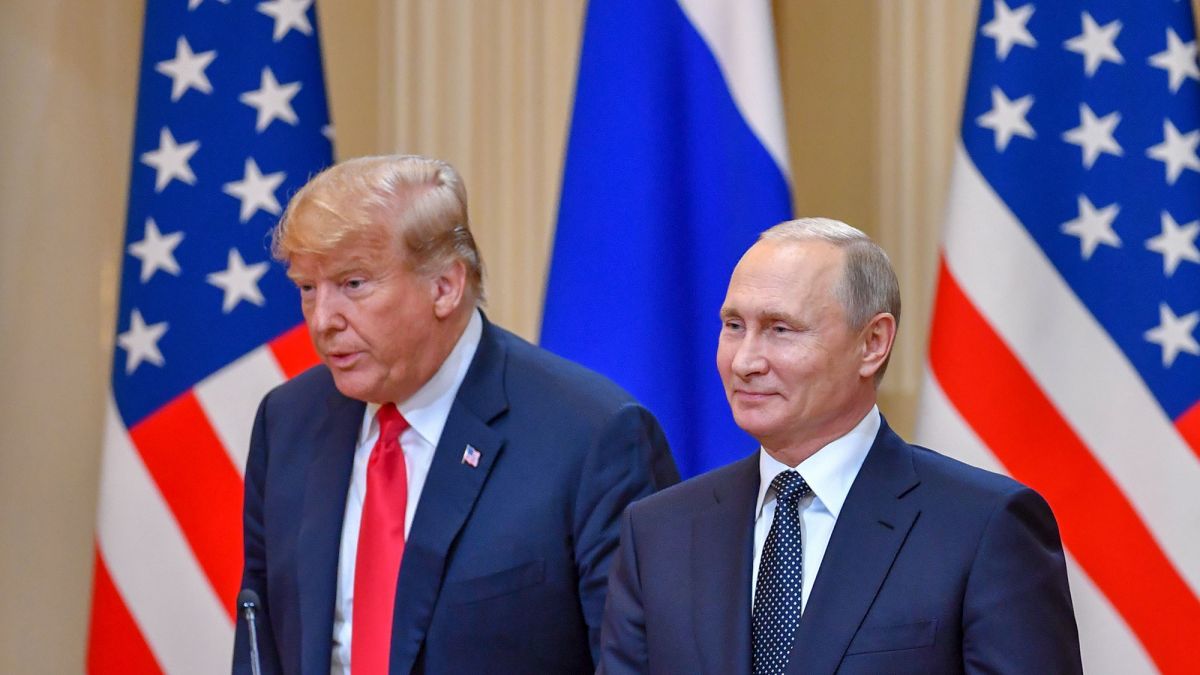putin sent a letter to Trump. What demands did he make and what do they mean for Ukraine?
14 March 16:36
on March 14, 2025, Russian President Vladimir Putin sent an official letter to U.S. President Donald Trump outlining Moscow’s position on the proposed 30-day ceasefire in Ukraine. This was reported by "Komersant Ukrainian" with reference to Reuters.
The letter, which was handed over to the American leader through special envoy Steve Witkoff during high-level talks in Moscow, reflects Russia’s strategic maneuvering amid ongoing diplomatic efforts to negotiate a cessation of hostilities.
The media writes that the conditions outlined in Putin’s letter indicate that Russia is seeking to maximize its advantages before agreeing to a pause in hostilities.
Putin’s conditions: what Russia wants from a ceasefire
According to Kremlin spokesman Dmitry Peskov, President Putin expressed support for the ceasefire proposal “in principle,” but put forward several key conditions that would significantly affect the balance of power in the war.
The main demands put forward by Moscow:
1. Ukraine must stop mobilizing. During the ceasefire, no new soldiers can be drafted into the Ukrainian armed forces.
2. Suspension of military exercises. Any ongoing NATO-led training programs for Ukrainian troops should be suspended.
3. Termination of foreign military aid. Ukraine would be prohibited from receiving additional weapons, ammunition, or financial assistance from its Western allies during the ceasefire.
Although these demands are presented as preconditions for a reduction in the intensity of hostilities, they are widely interpreted as a strategic move by Russia to consolidate its territorial gains, regroup its forces and strengthen its supply lines, while limiting Ukraine’s ability to prepare for further resistance.
Ukraine’s response: Zelensky rejects Putin’s offer
Ukrainian President Volodymyr Zelenskyy rejected Moscow’s demands, calling them “predictable” and “manipulative.” He said that Russia is not interested in peace, but is trying to put Ukraine at a disadvantage by imposing restrictions that will benefit the Kremlin’s military efforts.
Zelenskyy emphasized that Ukraine remains open to negotiations, but only on conditions that include
- the complete withdrawal of Russian troops from the occupied Ukrainian territories;
- security guarantees from NATO and Western allies to prevent future aggression;
- restoration of Ukraine’s sovereignty over all territories seized by Russia since 2014.
Kyiv remains skeptical about Russia’s true intentions, especially given Moscow’s ongoing offensive operations, despite its stated willingness to consider a ceasefire.
The Kremlin’s strategy is direct talks with Trump
One of the most important aspects of Putin’s letter is the Kremlin’s emphasis on direct talks with US President Donald Trump. By positioning the United States as the main player in resolving the conflict, Moscow seems to be bypassing Ukraine and its European allies, seeking to conclude a bilateral agreement with Washington that could exclude official Kyiv from key decision-making processes.
This approach is in line with previous Russian diplomatic strategies, when Moscow sought to negotiate directly with world powers, minimizing the influence of smaller countries involved in the conflict. The Trump administration, meanwhile, has demonstrated a willingness to seek diplomatic solutions, but also maintains that Ukraine will play a crucial role in any final agreement.
Although Trump and Putin have not yet scheduled a direct conversation, Dmitry Peskov confirmed that a meeting between the two leaders could take place after Donald Trump reviews Putin’s proposals and determines Washington’s next step.
Geopolitical implications of Putin’s “message” to Trump: shifts in US-Russian relations or increased tensions?
The Kremlin’s call for direct talks with the United States is seen as a strategic attempt to shape the narrative on Ukraine’s future while putting pressure on Western leaders to push Kyiv to make concessions. The previous policy of the Biden administration was largely focused on strengthening Ukraine’s military capabilities, while Trump’s approach includes reducing direct US intervention and encouraging negotiations with Russia.
Key considerations for the United States:
- maintaining its alliance with NATO and Ukraine while engaging in potential negotiations with Russia;
- ensuring that any ceasefire does not give Moscow a tactical advantage;
- avoiding the perception of abandoning Ukraine in favor of a U.S.-Russian deal.
Despite Trump’s diplomatic efforts, many in Washington remain wary of Putin’s long-term goals and are concerned that any premature ceasefire agreement could weaken Ukraine’s position in the conflict.
What will happen next?
According to military experts and analysts, the next steps in the negotiation process will depend on several factors:
- trump’s official response to Putin’s letter and his agreement to direct negotiations;
- russia’s actions on the battlefield. If the fighting continues, skepticism about Moscow’s commitment to a ceasefire will grow.
- ukraine’s counterproposals. After all, Kyiv could put forward its own set of conditions for negotiations.
As both sides struggle to navigate the complexities of diplomacy, there remains a risk that Russia could use the ceasefire talks as a stalling tactic, while the United States must carefully balance engagement with Ukraine’s security.









